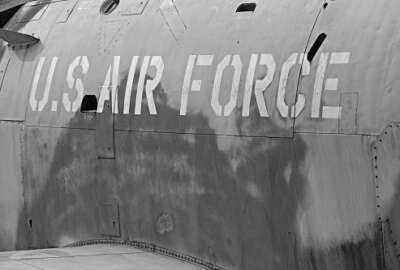The Air Force’s top civilian is pledging to put money into a new approach to energy consumption and usage.
Air Force Secretary Deborah Lee James said the service would put funds toward securing energy resources throughout the whole life of a program.
“We are going to have to make sure there’s some money there. Like with any new approach you perhaps start on the smaller side and then you scale from there,” James said during an Aug. 4 event at New America in Washington.
The Air Force has set up a team to focus on energy mission assurance for future years, James said.
James’ comments mark the first time she has publicly tied funds to the initiative.
In February, James directed the Air Force to set up an office of energy assurance to serve as the central management office for strategic energy and resiliency.
The office “will develop, implement and oversee an integrated facility energy portfolio, including privately-financed, large-scale renewable and alternative energy projects as well as direct Air Force investments,” a Feb. 23 memo stated.
The difference between energy mission assurance and simply saving fuel is established through the purpose of the initiative
The Air Force is by far the biggest energy user in the government and Defense Department. It accounts for more than 50 percent of the energy usage in DoD, Sharon Burke, a senior adviser at New America told Federal News Radio.
Ensuring the service has enough energy for its needs and using it effectively is becoming a higher priority.
If the Air Force can get 500 more miles out of a plane’s tank of gas, it can make missions safer, save money, better the environment and possibly save lives.
How secure is your network? Share your opinions in a Federal News Radio survey.
The goal of the program isn’t to just slash energy consumption, but to use it smarter.
“They are saying our Air Force mission in all of its varieties is going to be the primary driver for them. That’s a really powerful innovation tool and historically it always has been. When you have a military mission or a military need that’s defined as something that needs innovation, that tends to be a pretty powerful pull,” Burke said. “You’re talking about an organization that consumes a great deal of energy and has a pretty strong justification for enhanced reliability or security of supplies, so defining it as mission essential they are really putting it in a different territory.”
That can be different from something like an across-the-board cut on energy consumption to save money. Initiatives like that can sometimes hurt the way a service is run, while energy mission assurance and security tries to stretch energy further than it went before.
“Air Force energy projects have focused on cost savings and goal achievement resulting in a fragmented and/or siloed approach. Going forward, the Air Force will transition to a more comprehensive approach to energy challenges. This approach will not exclusively maximize return on investment or comply with Federal renewable mandates, nor rely on traditional back-up power sources. Rather, it will holistically optimize cost and provide resilient, cleaner sources of energy by balancing the objectives of AF energy projects,” stated a March 1, memo signed by Miranda Ballentine, the Air Force’s senior energy executive.
Burke said the Air Force can do this in tons of different ways.
For example, installing solar panels in Air Force bases in the desert to use as back up or supplemental power.
Some initiatives are less obvious, like requiring pilots to turn off some of their engines while they are taxiing on a runway.
Burke said those are some of the types of things that may come out of the Air Force’s energy security working group.
Now that work is underway, the Air Force has plans to use more alternative energy sources and better base and installation energy resiliency by the middle of 2017.
Copyright
© 2024 Federal News Network. All rights reserved. This website is not intended for users located within the European Economic Area.
